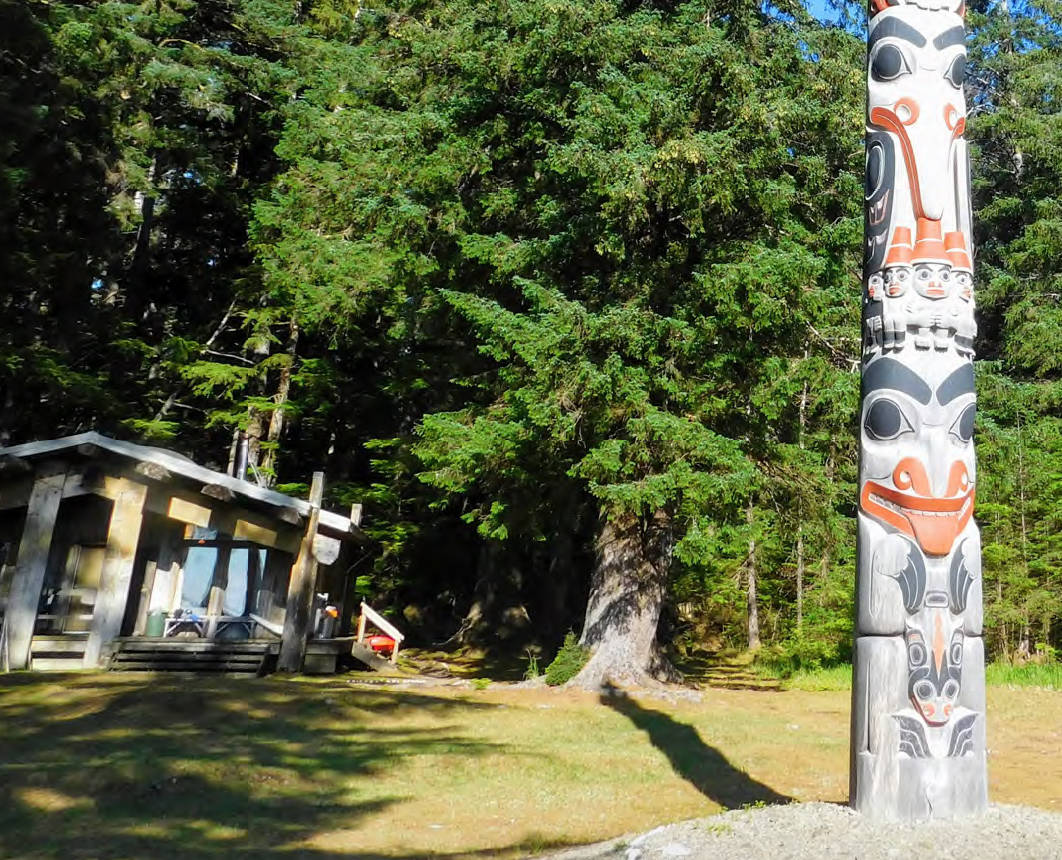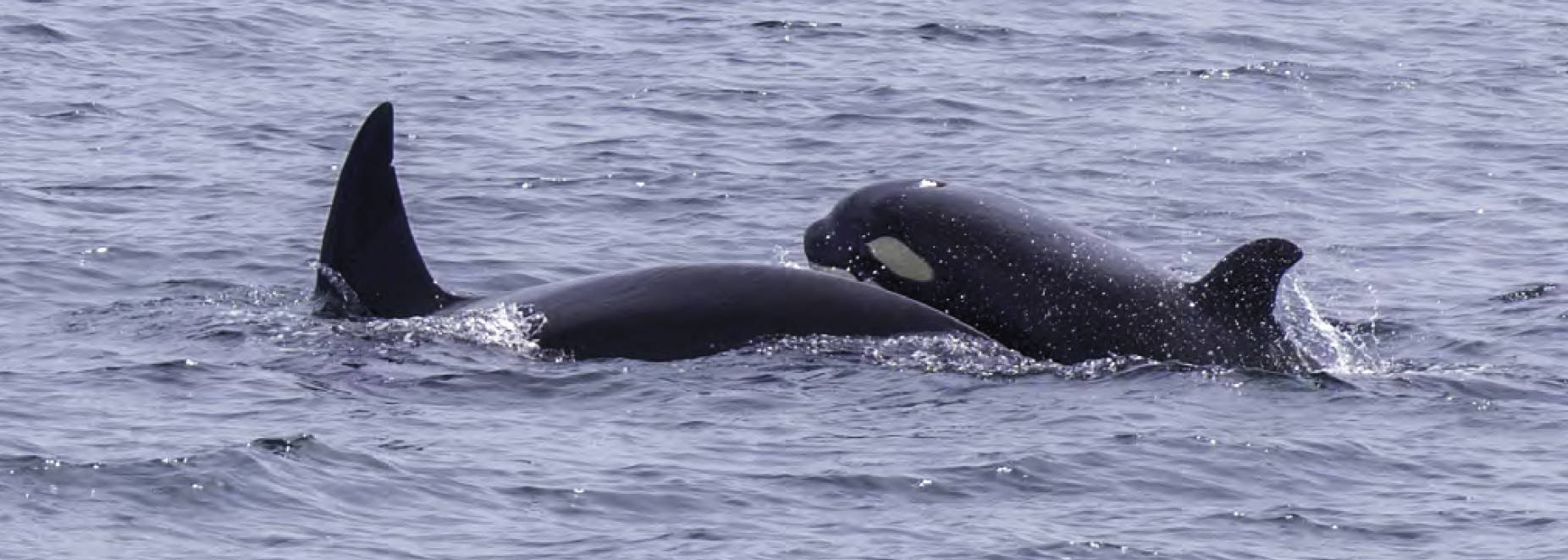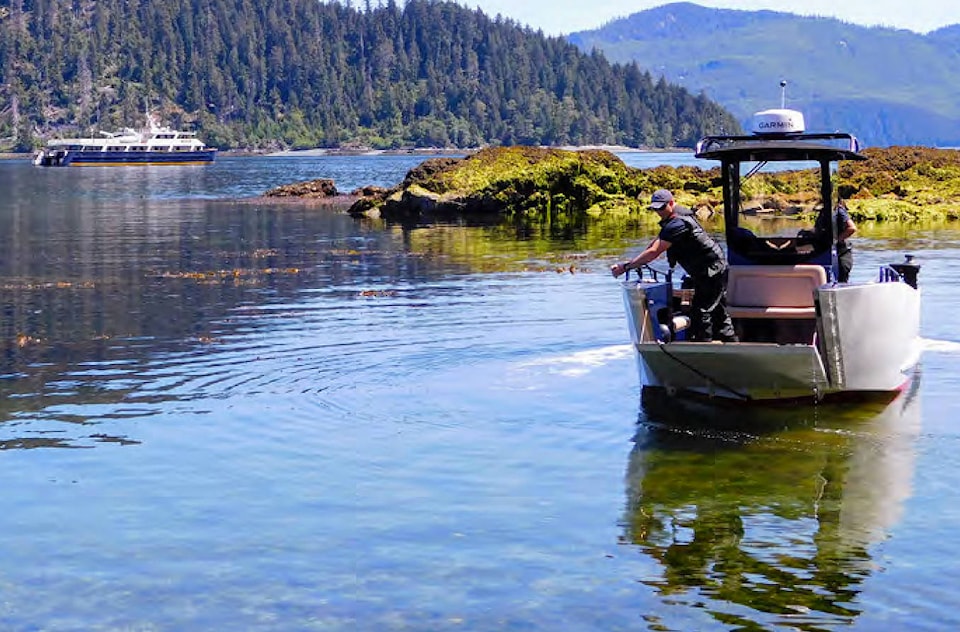Story and photos by Lucas Aykroyd
Weathered, intricately carved totem poles face the sheltered bay in SGang Gwaay. Breathing deeply, I gaze at this abandoned village in Haida Gwaii, an isolated northern British Columbia archipelago with more than 450 islands.
Walter, the native Haida watchman leading my tour group, takes us up the hill to view the remains of a six-beam longhouse with corner posts. Mossy logs overhang a deep indentation in the ground.
“The roof consisted of big cedar planks held in place with rocks,” he explains.
Next, Walter recounts a supernatural tale about children transforming into bears.
SGang Gwaay — a UNESCO World Heritage Site since 1981 — is the closest thing to Easter Island’s awe-inspiring statues that I’ve ever experienced in Canada. True tranquillity abounds.
I’m on a week-long cruise with Maple Leaf Adventures, an eco-friendly luxury tour operator based in Victoria. Every itinerary is slightly different, based on weather, wildlife sightings and guest preferences. Cascadia, a 138-foot expedition-style catamaran, recently renovated and debuted in BC waters in 2019, welcomes up to 24 travellers.

Happily, blue skies dominate on this June trip. Southern Haida Gwaii is federally designated and protected as the Gwaii Haanas National Park Reserve, a National Marine Conservation Area, and a Haida Heritage Site. This region, about a two-hour flight northwest of Vancouver, offers a unique blend of ancient Indigenous culture, unspoiled nature and oceangoing adventures.
One morning, Cascadia pulls up within eyeshot of Garcin Rocks, a Steller sea lion rookery. More than 200 sea lions are hanging out, mating, diving and barking. They sound like aspiring death-metal vocalists and smell like fishmongers.
After snapping some vivid photos, we move on. We promptly spot a pod of humpback whales. A fin whale — the world’s second-largest whale after the blue whale — surfaces nearby and spouts. Standing at the prow, I feel the spray caress my face.
Even more surreal, hundreds of Pacific white-sided dolphins surround the boat moments later, leaping out of the glittering ocean like madcap synchronized swimmers.
Early that afternoon, we’re preparing to stop at Hotspring Island and relax in 44°C pools overlooking Juan Perez Sound, named after the first European to explore the Pacific Northwest in 1774. Then we sight four transient killer whales. For half an hour, I watch in wonder as the magnificent dorsal fins of the male orca, two females and a calf surface over and over.

And that’s just one day. Off-ship excursions provide even more wildlife viewing.
Bald eagles soar overhead during a morning kayaking expedition with Maple Leaf Adventures naturalist Trudy Chatwin, who’s always happy to point out ancient murrelets or tufted puffins. Curious seals pop their heads out of De la Beche Inlet, brimming with lion’s mane jellyfish with long tendrils. Passing by little waterfalls, we enter a natural grotto, where a rainbow appears, before we paddle back to Cascadia.
Later, we head out in a skiff on Burnaby Narrows, featuring one of the world’s richest and most biodiverse intertidal zones between Moresby Island and Burnaby Island. Just off a beach blanketed with black mussels, Mike suits up for cold water snorkelling. Diving in, he carefully retrieves a giant sea cucumber, a red sea urchin, moon snails and other specimens for our viewing pleasure.
“I’ve never seen anything quite like this,” expedition leader Mike Jackson says.
To keep Gwaii Haanas pristine and respect its Indigenous heritage, trip permits and an orientation on safety and cultural history are required for visitors. For those fortunate enough to sail on Cascadia, there’s also a hearty helping of creature comforts.
Chef Mara Jernigan concocts an excellent daily menu, burgeoning with BC-sourced ingredients. Lunch might consist of chicken curry with brown basmati rice, or lamb chili with coleslaw and corn bread. Dinner could feature crisp duck confit with puréed white beans and roasted Brussels sprouts, or sablefish with steamed carrots and Chinese cabbage. The lavish desserts and post-outing snacks are a story in themselves.
There are plenty of ways to relax while sailing. Sometimes, I soak up a nature presentation by Mike or Trudy. Other times, I socialize with other guests while sipping a Maple Leaf ISA specially brewed by Spinnakers, Canada’s oldest brewpub, founded in Victoria in 1984.
Reading a book from the onboard library is always a good option in this WiFi-free zone. John Vaillant’s The Golden Spruce (2005) compellingly documents how a logger felled a huge Sitka spruce, sacred to the Haida people, as an ill-conceived environmental protest. I sleep peacefully in my well-appointed cabin, which includes a hot shower, natural soaps and shampoos, and other perks.
Gifts for sale range from Susan Musgrave’s A Taste of Haida Gwaii cookbook ($40) to eagle-adorned silk scarves ($80) by Haida artist Dorothy Grant. My favourite gift, though, is simply spending time in Haida Gwaii. It has inspired legendary BC art.
At Tanu, we visit the burial site of Bill Reid, who carved the iconic Jade Canoe statue at Vancouver International Airport. We also tour the village of Skedans, whose longhouses and mortuary poles were immortalized by Victoria artist Emily Carr in her moody paintings and her 1941 book Klee Wyck.
I’m more of a wordsmith than an artist, but visions of Haida Gwaii will linger in my mind for many years to come.
– Reprinted with permission from SOAR magazine, the in-flight magazine for Pacific Coastal Airlines.
***
Plan your adventures throughout the West Coast at westcoasttraveller.com and follow us on Facebook and Instagram @thewestcoasttraveller. And for the top West Coast Travel stories of the week delivered right to your inbox, sign up for our weekly Armchair Traveller newsletter!
